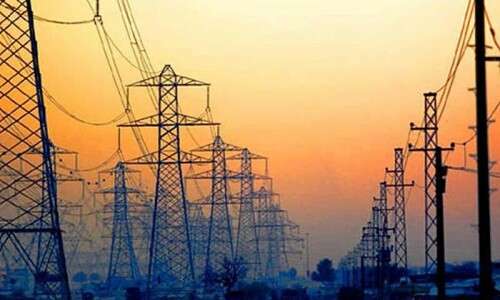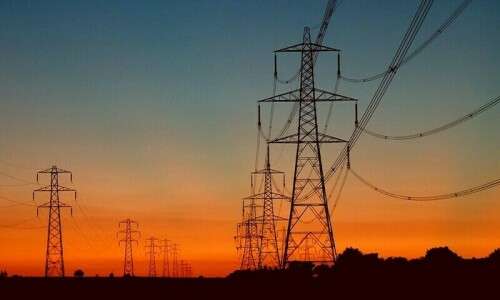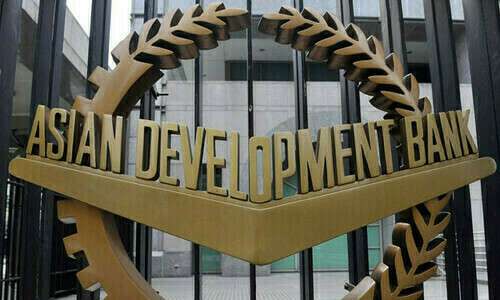Introduction
Pakistan, home to a population of 241 million, is grappling with severe economic challenges, the most pressing of which is the ongoing crisis in its power sector. This sector has been the cause of significant financial losses, stalling national progress and severely hampering economic growth. Recent reports highlight the enormous financial drain that the inefficiencies of electricity supply companies have caused, contributing to the national debt and undermining efforts to boost the country’s growth trajectory.
The structural issues in Pakistan’s power sector—coupled with rising political instability and external economic pressures—pose a grave threat to the country’s future. From small enterprises to IT freelancers, the entire economy is feeling the weight of these inefficiencies. Unless urgent reforms are enacted, Pakistan’s ability to recover and grow will remain uncertain.
The Impact of Pakistan’s Power Sector Crisis
Financial Losses Due to Inefficiencies
The Pakistan power sector crisis is staggering. In the last fiscal year, electricity supply companies drained the national exchequer of a jaw-dropping Rs660 billion, which is 11 times the federal government’s budget allocation for higher education. This figure alone is an alarming indicator of the inefficiencies entrenched in the power sector.
These losses are not merely figures on paper. The ripple effects are widespread, draining the national treasury and leaving little room for the government to address other urgent issues such as poverty, infrastructure development, and social welfare.
Circular Debt and Energy Price Hikes
One of the primary causes of the crisis is the burgeoning circular debt, a cycle where power companies are unable to pay their debts to fuel suppliers, causing a cascading effect. This ongoing debt cycle exacerbates fiscal constraints and forces the government to resort to frequent energy price hikes to bridge the financial gap.
Moreover, this ongoing financial burden on Pakistan’s power sector hinders industrial production, which, in turn, inflates the costs of goods and services. The result is a compounded economic downturn, where inflation, high energy costs, and power shortages stifle growth in both the public and private sectors.
The Struggle of Small and Medium Enterprises
Small businesses and medium enterprises (SMEs) form the backbone of Pakistan’s economy. However, the ongoing power crises have made it increasingly difficult for them to operate effectively. Frequent power outages disrupt production and retail, which means that many small businesses are losing valuable time and revenue.
Additionally, IT freelancers and professionals, who have become a vital source of foreign exchange earnings, are particularly vulnerable. Many IT professionals rely heavily on reliable electricity and internet services to meet international deadlines. Unfortunately, the erratic power supply and slow internet speeds in Pakistan have led many of these professionals to emigrate to neighboring countries like Dubai in search of better facilities and job prospects.
Pakistan’s Position in Global Internet Speed Rankings
As of December 2024, Pakistan ranks a dismal 198th globally in internet speed, trailing behind countries like Palestine and Bhutan. This poor ranking is a significant concern, especially for IT businesses that rely on stable internet connections to cater to international clients. The slow internet speeds, paired with power disruptions, create a perfect storm for IT freelancers who need reliable services to complete their work.
Due to these challenges, many IT professionals have opted to relocate to Dubai, where the infrastructure is more conducive to business operations. The ongoing emigration of IT professionals threatens Pakistan’s ability to grow its services export sector and generate valuable foreign exchange.
Economic Growth and Export Challenges
Export Growth and Trade Deficits
Pakistan’s trade balance is under strain, with the first five months of the fiscal year (July-November 2024) showing mixed results in exports. Goods exports grew by 12.57%, totaling $13.69 billion, and services exports increased by 7.91% to $2.6 billion. While these growth figures are promising, they mask the underlying challenges that Pakistan faces in sustaining this growth.
In the same period, the goods trade deficit stood at $8.65 billion, with imports increasing at a slower pace than exports. However, with the global rise in fuel prices and instability in the Middle East, Pakistan faces the likelihood of escalating imports, which would put even more pressure on the trade deficit.
The Role of Remittances in Pakistan’s Economy
Remittances have become Pakistan’s largest source of non-debt foreign exchange inflows, surpassing goods exports. From July-November 2024, Pakistan received $14.76 billion in remittances, a crucial lifeline for the economy. However, the political turmoil in the Middle East could threaten the stability of these remittance corridors, particularly since over 55% of Pakistan’s remittances come from Gulf Cooperation Council (GCC) countries.
If military conflicts in the Middle East escalate and affect countries like Saudi Arabia and the United Arab Emirates, Pakistan could experience a significant drop in remittance inflows. This poses a serious threat to the stability of Pakistan’s foreign exchange reserves.
Political Stability and Its Impact on Economic Recovery
Government-Opposition Dialogue and Political Uncertainty
The political landscape in Pakistan remains volatile. Following the tragic events of the November 26 protest in Islamabad, which led to the deaths of PTI workers and law enforcement personnel, there have been initial steps taken towards dialogue between the government and the opposition. While political stability is crucial for sustaining economic recovery, the unpredictable nature of Pakistan’s political environment presents significant challenges.
The government’s proposed reforms on religious seminaries, for instance, have sparked backlash from influential political figures and religious parties like Maulana Fazlur Rehman’s JUI. The ongoing political friction between the government and opposition parties has created a tense atmosphere, further complicating the nation’s economic situation.
The Role of Political Alliances in Economic Strategy
In light of the ongoing tensions, the possibility of an alliance between the opposition and religious factions poses a significant risk to the government’s ability to implement economic reforms. Such an alliance could lead to greater political instability, which could dampen investor confidence and hinder foreign direct investment (FDI) inflows.
Managing the political instability amidst the growing threat of militancy and terrorism in regions like Khyber Pakhtunkhwa and Balochistan will be a critical challenge for the government. Addressing these security issues while managing political alliances is vital to ensuring Pakistan’s economic recovery.
Future Prospects: A Path Toward Economic Recovery?
While the situation appears grim, there are signs that Pakistan’s economy could still recover with the right mix of political stability and structural reforms. The government needs to accelerate power sector reforms to tackle inefficiencies and reduce circular debt. Additionally, improving the internet infrastructure and addressing the concerns of IT professionals will help to retain Pakistan’s valuable human capital.
Moreover, maintaining the growth of exports and remittances will be critical to reducing the trade deficit. Pakistan must focus on creating a conducive environment for businesses and investors while ensuring political stability to restore investor confidence and attract foreign investment.
FAQs
1. How does Pakistan’s power sector crisis impact its economy?
The power sector crisis causes severe financial losses, leading to higher energy prices, reduced industrial output, and growing fiscal deficits. This drains the government’s resources, making it difficult to invest in other critical sectors.
2. Why are IT professionals leaving Pakistan?
Frequent power outages and slow internet speeds are major reasons why IT professionals are emigrating to countries like Dubai. Pakistan’s poor infrastructure hampers the productivity of tech workers who rely on stable electricity and internet services.
3. What is the current status of Pakistan’s exports?
Pakistan’s exports have shown growth, with goods exports increasing by 12.57% and services exports by 7.91%. However, challenges remain, including a high trade deficit and the potential impact of rising imports.
4. How important are remittances to Pakistan’s economy?
Remittances are a crucial source of foreign exchange for Pakistan, making up a significant portion of the country’s non-debt foreign exchange inflows. Any disruption in remittance flows, especially from Gulf countries, could have serious economic consequences.
5. What reforms are necessary to ensure economic recovery?
Reforms in Pakistan’s power sector are urgently needed to reduce inefficiencies and circular debt. Additionally, improvements in internet infrastructure and political stability are crucial for long-term economic growth.
ALSO READ
https://flarenews.pk/2024/12/16/weather-rescues-india-in-third-australia-test/



